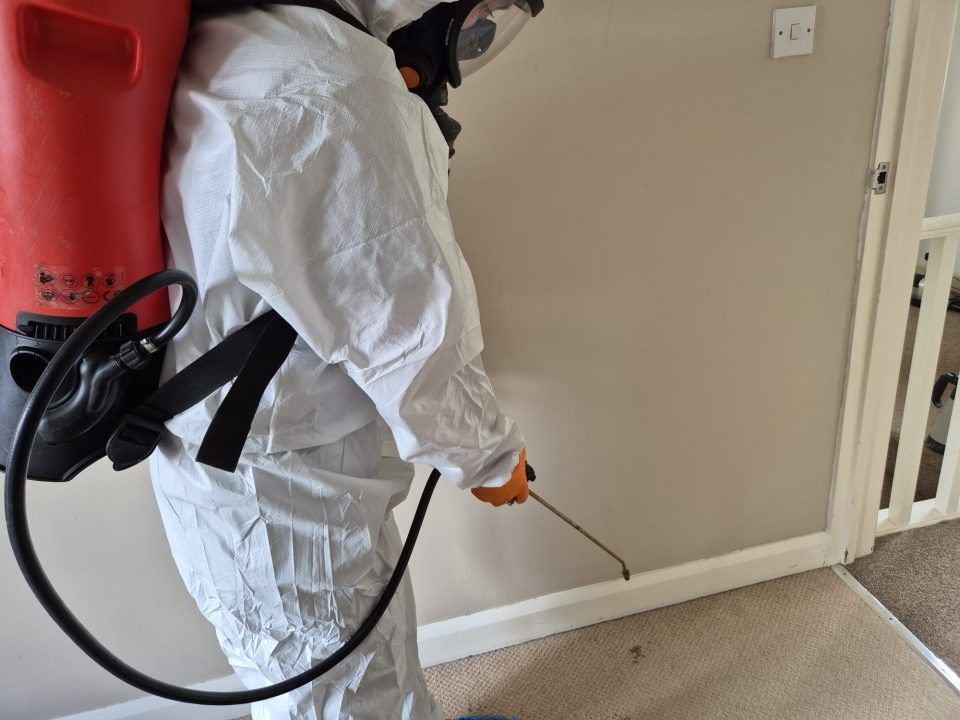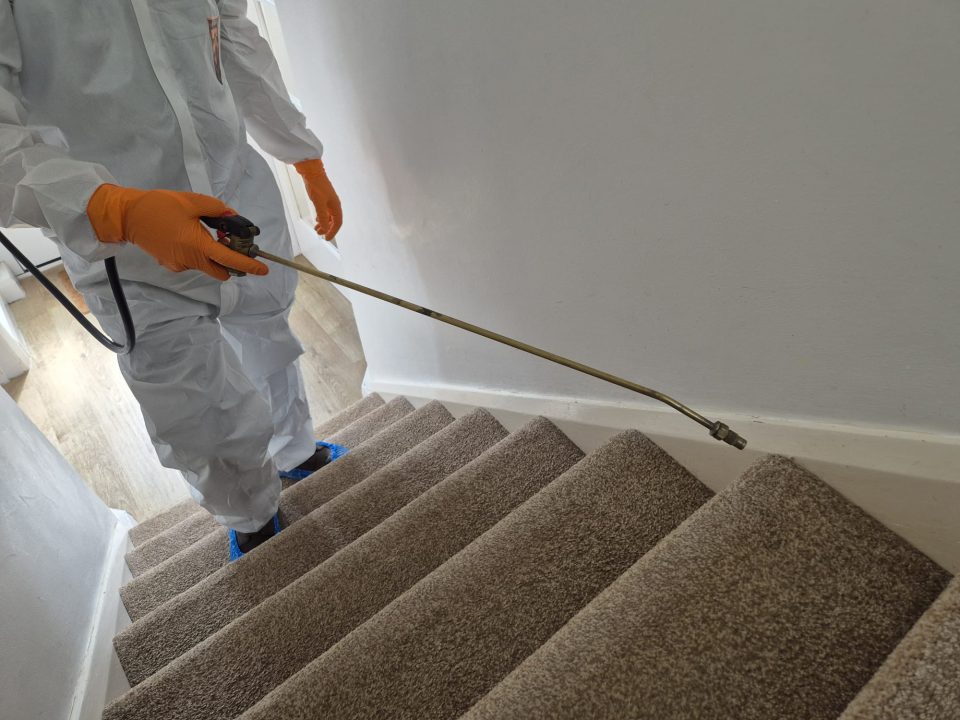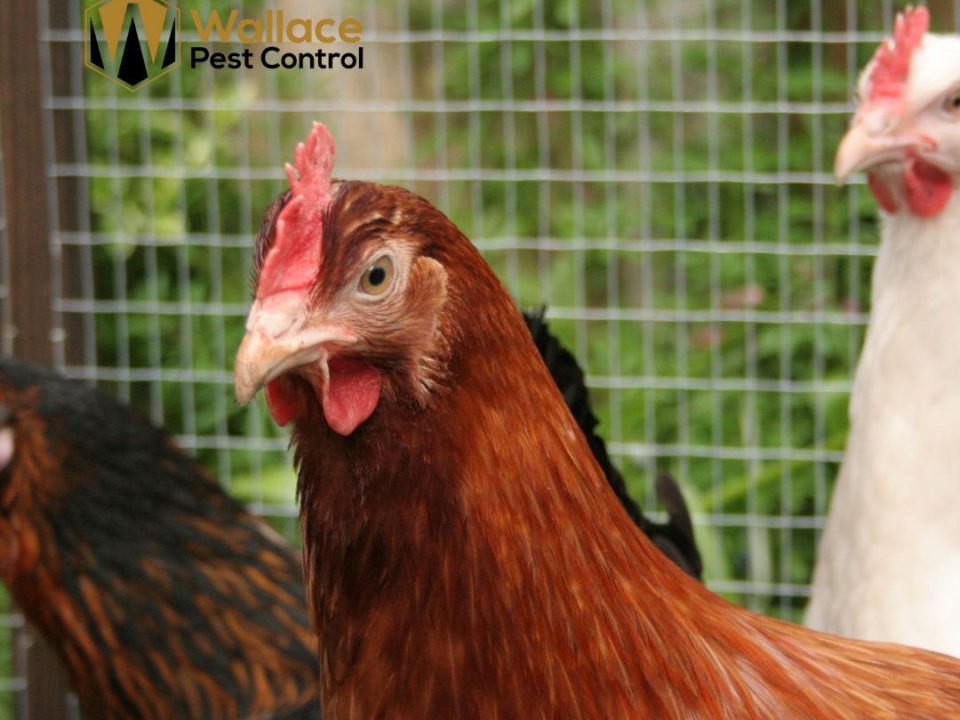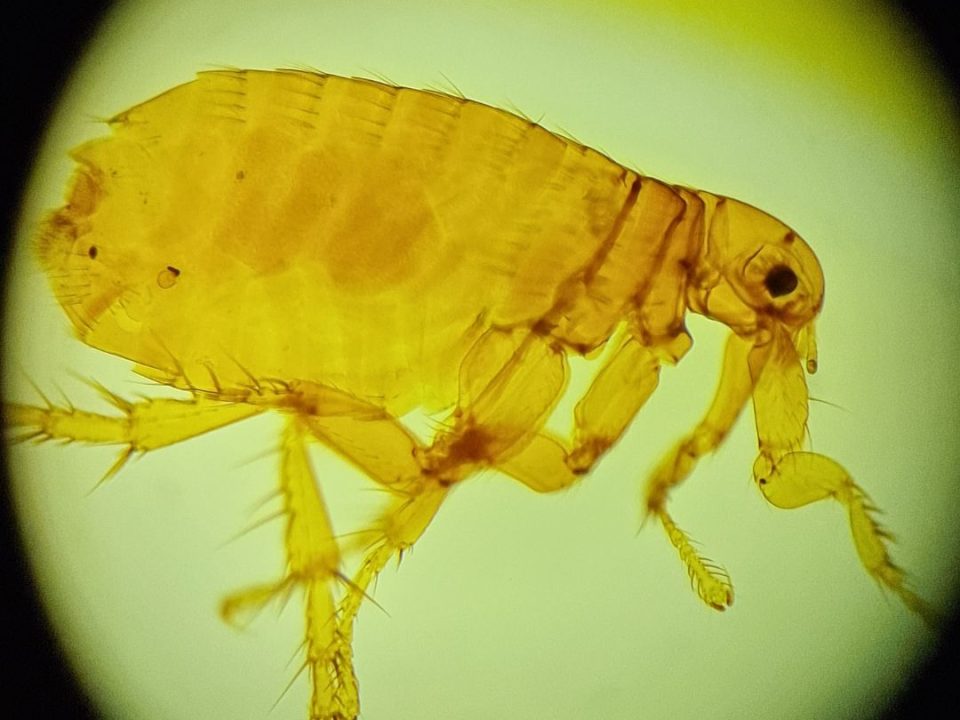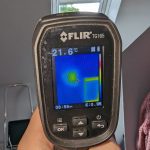
Know First, Treat Smart: Pest Survey Service Explained

Your Common Wasp FAQs UK
How Much Does It Cost to Get Rid of Wasps?
(And Everything Else You Were Afraid to Ask)
When you’re rooting around the loft for the holiday suitcases—or pruning the shrubs only to see a buzzing paper ball in the foliage—the next question is: “What will this set me back?” In the UK, prices run the gamut. At the low end you’ll find opportunists charging peanuts (often minus PPE, public liability insurance, or even road-worthy vans). At the top end, national chains and inventive freelancers can quote anywhere from £50 to £280 for the exact same job. Wherever fear meets urgency, a few people will try their luck.
In this blog we will answer your questions like “Why is there such a variation in cost?”, “What am I actually paying for?” and “What is involved in getting rid of wasps?”, to help you fully understand “How much does it cost to get rid of Wasps”

How much does it cost to get rid of wasps? And Why is there such a variation in costs?
When looking at cost, we need to take many things into consideration; What is included in the service? What is the location of the wasp nest? Is it easily accessible? Is it in a public space? Are there any restrictions on the time the treatment can be carried out at? What equipment is required? Is it a residential or commercial property? Is other wildlife present?
In the UK there are no regulations on the price that can be charged for wasp nest treatments. Therefore prices are for each individual or company to decide for themselves. Often the treatment is the same or very similar, no matter which company/sole trader you go for. However there is some variation in what the service provided includes, so make sure you’re asking what is involved in the service and educate yourself on what is actually required to get rid of wasps. You will always pay a little more for an experienced, qualified and fully insured pest control service.
The BPCA sets a code of best practice which any qualified and insured pest control company or sole trader will normally follow. This means that often you will receive the same service at various prices.
At the low end you’ll find opportunists charging peanuts, often minus PPE, public liability insurance, qualifications or even road-worthy vans. Then at the top end of the scale are large national/international companies who are well known, have higher overheads, and people will pay the higher costs without realising there are more local pest control companies that provide the same/similar, sometimes even better, service for a smaller fee.
Your local professional pest control company with proper qualifications and insurance, are more likely to provide a more personalised service, plus you're supporting a local business! Just ensure to check that they are fully qualified, experienced and insured. You can do this by checking google reviews and asking the question “Are you qualified and fully insured?” when booking to get rid of wasps.
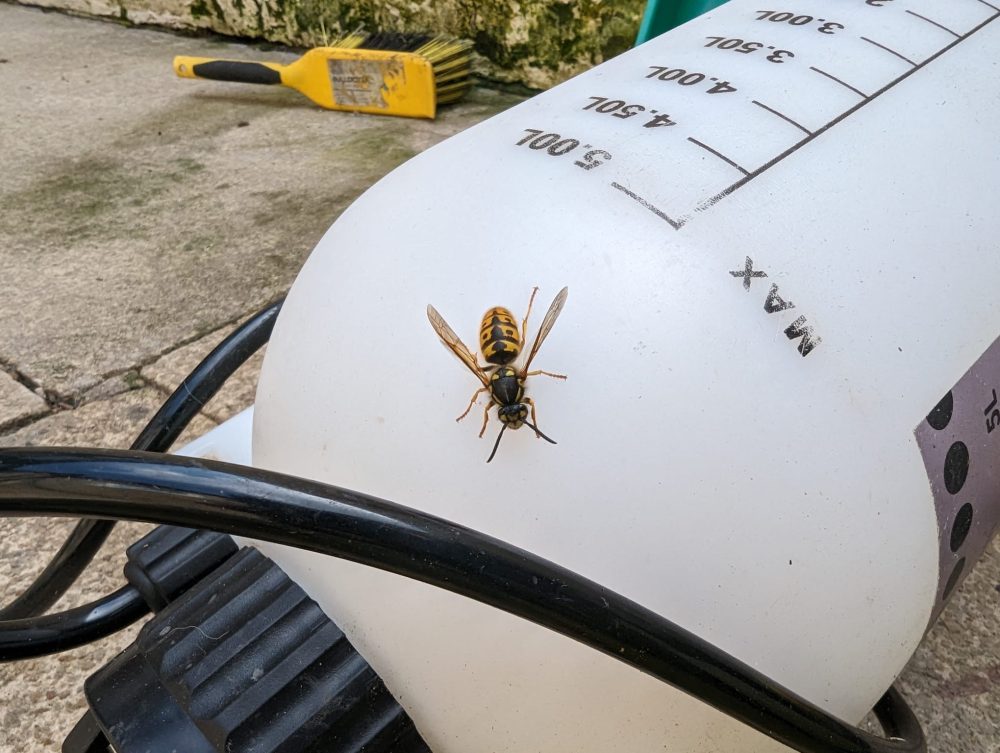
You also have companies that will upsell services, on top of treating the nest. For example, charge hundreds to remove a wasp nest that has been treated and does not require removing. Why do you not always need to remove the nest after it has been treated? Click here to find out why.
The location of the nest also has an impact on the cost. If the nest is not easily accessible it will take more time, skill and equipment to treat. If the nest is at the top of an industrial unit, out of the reach of the normal ladders or long reach poles, scaffolding or a cherry picker may be required. Pest control companies will usually ask a series of questions to ensure accessibility and that they come prepared with the right equipment.
Health and safety is also always a key consideration when looking at cost and links closely to the location of the nest. When a wasp nest is treated the wasps can become very agitated and even aggressive for a couple of hours. The immediate area needs to be avoided for a minimum of 2-3 hours after the treatment to reduce the risk of someone being stung, whilst the treatment takes effect. This means if it is in a public space or in a place of work, the nest will need treating out of hours when the area is quiet. It’s no good treating a nest at ten to five above an office door, just before everyone wants to leave! Then there is the safety of the pest technician to take into consideration. Full PPE is required to keep the technician safe whilst treating the nest.
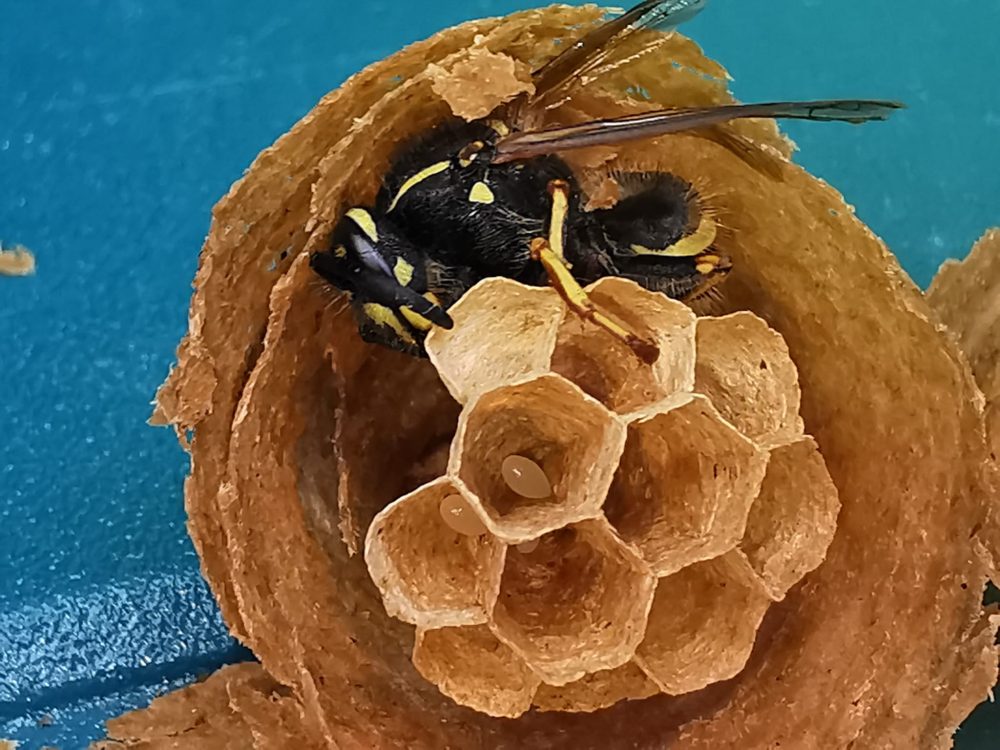
What We Offer
We keep it simple. £90 covers a full wasp nest treatment anywhere in East Lancashire, the Ribble Valley and neighbouring districts. Why that figure? Because the biggest slice of the bill is safety. A ventilated sting-proof suit alone costs about £300; respirators, carbon-fibre high-reach lances , specialist insecticide and annual fit-testing all add up. Factor in vehicle fuel, staff training, regular refresher courses and disposal licences, and you can see why a “cheap” treatment often cuts corners that matter.
For ninety pounds you get a technician who arrives protected, insured and equipped to finish the job on the first visit—plus clear advice on staying sting-free until the colony is gone. No hidden extras, no upsells. Just professional kit, years of hands-on experience and the peace of mind that the only buzzing you’ll hear after we leave is the kettle boiling for that well-earned brew.
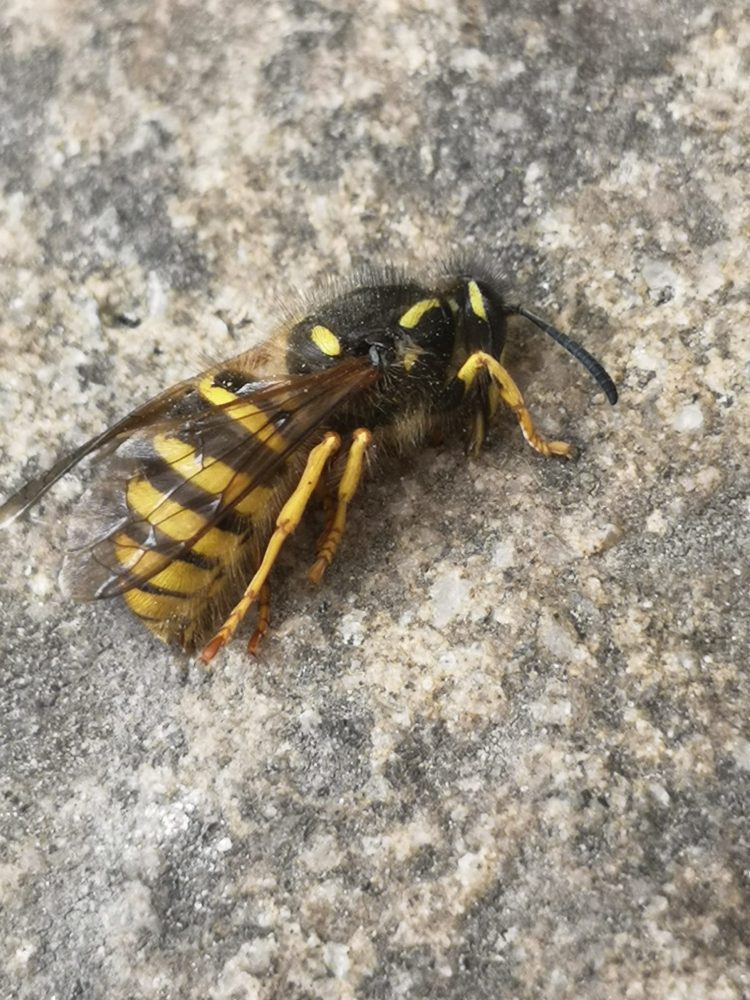
What am I actually paying? And what is involved in getting rid of wasps?
Tools of the Trade: Why £90 Beats DIY
For the price of a takeaway and a tank of petrol you’re hiring far more than “some bloke with a spray can.” Our kit bag is a mobile chemistry lab stocked for every nest scenario:
- Knock-down aerosols – pyrethrins. Natural chrysanthemum extract that flushes guards for positive ID before the serious work starts.
- Low-agitation dusts – micro-crystalline permethrin or tetramethrin. These ultra-fine particles waft deep into brood cells, coat larvae, pupae and—crucially—the queen, without whipping the colony into berserker mode.
- Residual wet sprays – cypermethrin. When a nest entrance sits flush to masonry we apply a thin film that keeps killing any late-returning foragers for days.
- Diatomaceous earth. A mineral desiccant that slices the wax layer off a wasp’s exoskeleton; handy in food-prep areas where conventional insecticides are frowned upon.
- Azamethiphos. A muscular organophosphate saved for giant, awkward nests that shrug off pyrethroids.
- Organic & non-toxic options (exempt under UK Biocidal Products Regs). Plant-oil foams and silica gels for ultra-sensitive sites—priced separately but always available.
Delivery is just as critical. Our carbon-fibre AR8 telescopic lance allows us to send our insecticide formulations nine metres skyward from solid ground—no ladders, no shaky soffits, no tempting plume of technician CO₂ hovering at the hole to alert thousands of wasps. For easier to reach nests or where a more intricate hand is required we have our custom modified Birchmeier DR5 duster system. Once application is complete, wasp worker traffic typically nosedives inside an hour; within 48 hours even far-flung foragers have picked up a lethal dose.
After that comes disposal. A treated nest is now contaminated waste—strictly landfill via licensed carriers, never a craft project. If the technician judges it accessible, we can return and bag it from £60; if it’s entombed in a wall void it will dry, crumble and pose no further risk. Either way, that £90 buys professional chemistry, precision kit, insurance, and the peace of mind that the colony is finished for good.

Safety & Risk: Why Caution Beats Courage
A full-grown Vespula colony can field 3–5 thousand workers, each armed with a lancet-style sting that delivers venom again and again. Toxicologists talk about a “sting load”: roughly 10 stings per kilogram of body weight edges into lethal territory. For an average 70 kg adult that’s 700 stings—well within reach if you knock a nest out of a loft rafter.
Even a single sting can be dangerous if you fall into the 1–3 % of UK adults predisposed to anaphylaxis. Severe reactions escalate in minutes: swelling throat, plummeting blood pressure, loss of consciousness. Some professional techs keep EpiPens on hand, but their real life-saver is distance—carbon-fibre lances and ventilated suits turn an angry nest into a distant dot.
DIY fixes often magnify the risk. Expanding foam or supermarket aerosols rarely reach the queen. Block the main entrance and the workers simply chew through plasterboard, chasing light and CO₂ until they erupt indoors—frequently via recessed down-lighters or bathroom extractor fans. What started as “I’ll save a few quid” becomes a living room full of irate wasps and an emergency call-out at double the price.

Transparent Costs
|
Select Your Service |
What You Get (in plain English) |
Fixed Price |
|
Complete Nest Neutralisation |
One weekday visit, professional-grade dust or aerosol applied safely from ground level; the colony is silent within 48 hours. |
£90 |
|
Clean-Up Nest Removal (optional) |
Return 7–10 days later to bag and dispose of the dead comb—only if the technician confirms it’s safe and reachable. |
from £60 |
|
Insect Identification Call-Out |
BPCA advanced technician/entomologist collects samples, confirms species, and supplies a written report—ideal if that “wasp nest” is actually bumblebees. |
£60 |
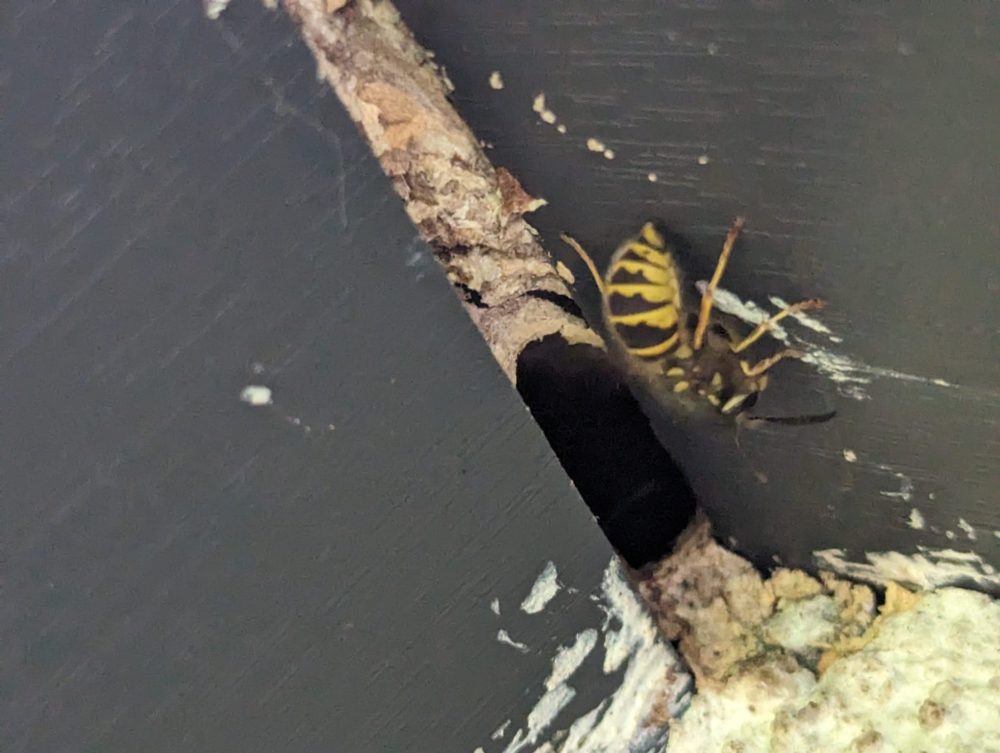
Bodge-Job Warning: Why DIY Foam & Garden-Centre Sprays Backfire
We’ve seen every shortcut in the book—from “rogue trader” quick fixes to well-meant landlord repairs—and they nearly always end the same way: aggravated wasps and a panicked call-back. The nest you ignore today becomes tomorrow’s ceiling full of angry insects. Each summer we also meet impatient homeowners who cancel because we’re booked solid for 24 more hours. They promise, “I’ll just do it myself.” A week later they’re on the phone recounting a horror scene: scarves wrapped around their faces, moped helmet for a visor, fishing waders for “protection,” and a garden-centre aerosol held at arm’s length.
Here’s why that ends badly. Expanding foam is marshmallow to wasp mandibles; they chew straight through and look for a new exit—which is often your loft light or bathroom fan. Off-the-shelf sprays might drop a few guards, but the queen simply ramps up egg-laying to replace them. Miss the queen and you’ve missed the mission. Meanwhile, DIY gear keeps you within sting range, exhaling CO₂ that guides every wasp straight to your face.
For £90 you get the right chemistry, delivered from the safety of ground level, by a suit-clad professional who will finish the job the first time and spare you the homemade hazmat cosplay.

About The Wasps That You Want Rid Of
Meet the Usual Suspects: Vespula vulgaris vs. Vespula germanica
We all know it helps to know who you’re up against. We’ve zeroed in on the common wasp (Vespula vulgaris) and the German wasp (Vespula germanica) because, between them, they account for the overwhelming majority of nests we treat here in Lancashire—and others find across the UK. Their colonies follow almost identical life cycles, yet subtle quirks in markings, nest-site preferences and late-season behaviour can influence where you’ll find them and how feisty they’ll be. Get familiar with these two and you’ll recognise 90 % of the yellow-and-black surprises that turn up in lofts, bird boxes and barbecue roofs.
|
Trait |
V. vulgaris (Common Wasp) |
V. germanica (German Wasp) |
|
Face Markings |
Jagged black anchor on the clypeus (face plate) |
Three neat black dots like Morse code |
|
Nest Preference |
Dark voids—lofts, wall cavities |
Broader tastes: lofts, compost heaps, even bird boxes |
|
Behaviour at Bins |
Aggressive late-season forager |
Slightly calmer but equally food-driven |

The Year in the Nest: A Lancashire Timetable
Before we map the nest’s progress month-by-month, a word on why this is a Lancashire-specific calendar. Our county’s mix of upland chill and coastal humidity nudges the wasp season a week or two later than the South-East and often keeps activity alive into the wetter, milder Octobers we’ve had in recent years. Using a generic UK chart can leave homeowners either panicked too early or lulled into a false sense of security. The timeline below is built from ten seasons’ worth of call-out data, so it reflects the reality we see on the ground—from Burnley loft hatches to Ribble Valley compost heaps.
|
Month |
Inside the Nest |
Outside the Nest |
|
March–April |
Overwintered queen ends diapause (insect hibernation) and chews wood pulp into a golf-ball starter nest. |
Lone queens scouting soffits and sheds. |
|
May–June |
First brood of workers (sterile females) emerges; nest growth accelerates via trophallaxis (mouth-to-mouth food exchange). |
Workers gather caterpillars and cellulose. |
|
July–August |
Peak size: 3 000–5 000 individuals; nest temperature hovers around 30 °C. |
Loft suitcases meet stinging militia; call-outs spike. |
|
September |
The queen switches from fertilised to unfertilised eggs, producing males; wasps are haplodiploid (males hatch from unfertilised eggs). |
Workers turn sugar-mad as natural food dwindles. |
|
October–November |
New queens leave to mate and hibernate; the old queen dies, the colony collapses. |
Activity dies off after the first hard frost. |
Cast of Characters
- Queen – Founder, egg-layer, and thermostat. Early season she forages and nurses; by June she’s a full-time egg factory, laying roughly 200–300 eggs per day at peak.
- Workers – Live ~6 weeks. Youngsters clean cells, middle-agers chew wood and build comb, seniors forage. This age-related job rotation is temporal polyethism.
- Drones (Males) – Produced late season, sting-less, exist only to mate. They die shortly after completing their single, evolutionary purpose.

Weird & Wonderful Nests We’ve Found
- Behind the insulated side-wall of a luxury hot-tub—wasps chewed the foam, excavating a cavity until the owner spotted swarms around the spa one sunny July afternoon.
- Inside a fibre-optic broadband cabinet—the engineer refused to open the door.
- In a Land Rover wheel arch; had been parked in a farmyard for some time, when it came time to do some work on the vehicle they discovered wasps had set up camp.
- Above a child’s garden playhouse roof; the internal void hit 35 °C on hot days—perfect wasp incubator, nightmare play zone.
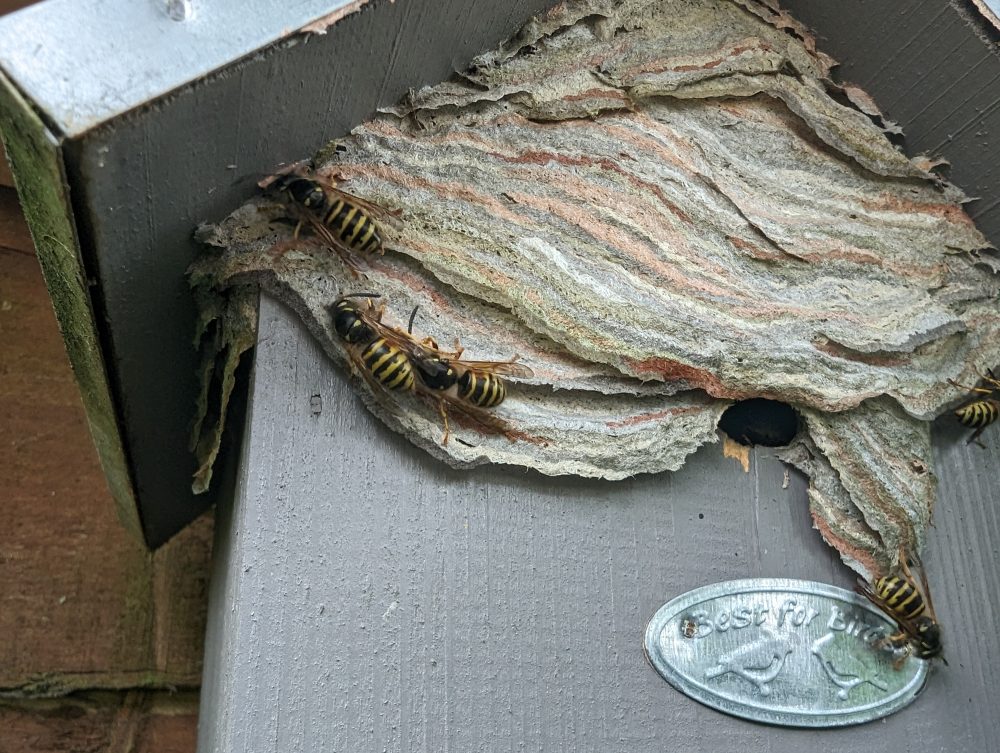
Ready To Evict Those Wasps?
Give Rachael in our office a Call or WhatsApp on 07496 680 879. We serve East Lancashire—Ribble Valley, Hyndburn, Burnley, Pendle, Rossendale, Blackburn and all surrounding areas—Monday to Friday, with same-day slots whenever we can. One visit, fixed fee, and your summer’s sting-free.

